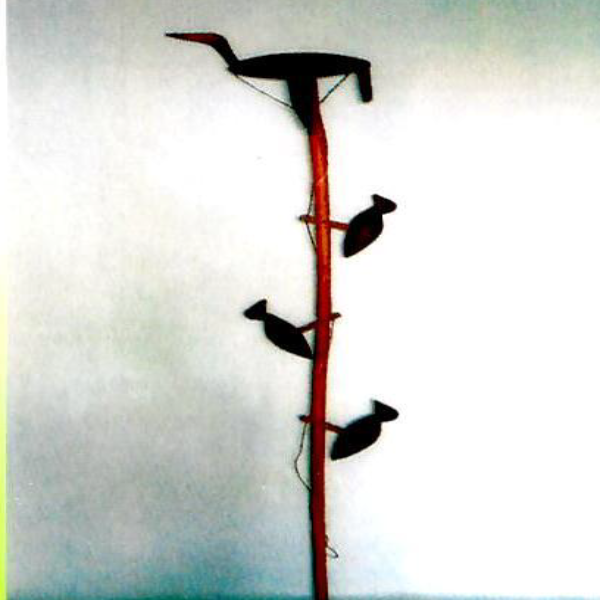Themes
tribal artefacts
Rabha tribe craftsmanship, assam

Manchalengka is an artistic bamboo and wood made object employed by the Rabha tribe during the Farkanti dance and funeral rites. The base, which is crowned by a huge wooden hornbill, has three smaller hornbills that oscillate when a string is tugged. This kinetic form provides a fascinating visual stimulus, thus improving further the dynamics of traditional presentation. For the Rabha people, Manchalengka is an instance of their handiwork and close affinity to nature, for the hornbill is a sacred bird among them. The Rabhas have mastered the art of making things with bamboo; fine things like Manchalengka. Their bamboo weaving and carving skills are passed on to the next generation while they still carry their cultural identity. This material is light in weight and strong to produce both beautiful and useful things.
Rabha artisans expertly carve hornbill images in Manchalengka, depicting the bird's beauty and importance. The detailed carvings of the wooden hornbills reflect the craftsmanship of the tribe while affirming cultural identity. Through the addition of moving parts that simulate the bird's flapping wings, the artists bring their creative vision to life in a manner that reflects the Rabha people's strong affinity for their traditions.
Deeply enshrined in the cultural purview of the Rabha tribe, the hornbill occupies a pithy position at Manchalengka. The various motions together with the meanings held in them form their whole life's story. It is a symbol of strength and wisdom, one that speaks of two worlds, the world while alive, as well as after death. The hornbill is treated as a protector spirit by the Rabha, and its image is used in rituals and dances. The use of Manchalengka exhibits the active motion of the wooden hornbills as an indication of their understanding of continuity, change, and blessings from the ancestors.

